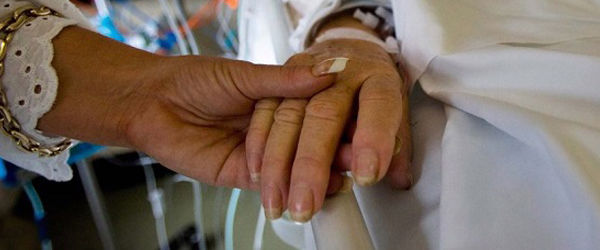This coming Advent, Catholics throughout the English-speaking world will begin using a new translation for the prayers that we say in the Mass.
This new, third edition of the Roman Missal is the fruit of many years of work by the Vatican and bishops in America, Canada, England and elsewhere, working with the Vatican’s Vox Clara Committee and the International Commission on English in the Liturgy (ICEL). The translators did a beautiful job. They have given us prayers that will help us to lift up our hearts and minds to give glory and praise to God in language that is reverent and inspiring. This is not a new Mass. It is a new translation of the ancient Latin prayers of the Mass. This new translation continues the liturgical renewal envisioned by the Second Vatican Council (1963-65). This new translation restores the beauty of the original Latin. It lets us hear the many Scriptural allusions that are woven into the fabric of the Mass. And it helps us to experience how our worship on earth unites us in love to the liturgy of heaven. The new translation of our Mass prayers will give us the strength we need for our Christian mission of the new evangelization. And it will inspire us to see the vital connection between the Body and Blood of Christ in the Eucharist and his presence among us in the poorest and most vulnerable of our brothers and sisters. So I am excited to start implementing this new translation. Practically speaking, this means we will be learning together how to pray our familiar prayers in a new way, using new language. Most of the changes are in the prayers that the priest prays. But the people’s parts also change. We will be praying a new translation of the Confiteor (“I confess to God”), the Gloria, the Creed and the prayer that we say before Communion (“Lord, I am not worthy”), among other changes. Implementing this new translation means much more than simply memorizing new prayers. I really believe this new translation offers us a special moment of grace. It is a fact of life that anything we do over and over again can become routine, something we just do without paying too much attention. But we can never let the Mass become routine for us. We need to love the Eucharist! We need to live the holy Mass! Our Christian life, our whole life, must be centered in the Eucharist. That is why this new translation is such a wonderful gift. It gives us the opportunity for a new Eucharistic catechesis. It gives us the chance to reflect more deeply on the meaning of our worship — on what we do when we celebrate the Eucharist, and why. All the words and actions in the sacred liturgy reflects the ancient faith of the Church and are carefully arranged to bring us to the encounter with the living God who comes to us in these sacred mysteries. There is an ancient principle in the Church: lex orandi, lex credendi — the law of prayer is the law of faith. That means that the words we pray — and how we pray them — shape what we believe and how we live out our beliefs. We become what we pray. The prayer of our Eucharistic worship is meant to make us become more like Jesus Christ. It meant to make us the Eucharistic people that he intended us to be. Jesus commanded us: “Do this in memory of me.” In our worship, we remember his example of love and self-offering, how he gave his Body and Blood as bread for the life of the world. In our Eucharistic worship, we join our own sacrifices to his. We make our lives a prayer of self-offering — as he did on the cross. In union with Jesus, we offer ourselves to the Father as a sacrifice of praise and thanksgiving. And through our worship, we become more and more committed to living as Jesus did — in generous service to others. We come to live the Mass — working in everything we do to bring Jesus Christ to our brothers and sisters. The promise of this new translation of the Mass is that we will enter more deeply into the mystery of the faith — the mystery of God’s love for the world, a love he wants to spread through each one of us. So as we pray for each other this week, let us ask Mary, our Blessed Mother, to help make us souls devoted to the Eucharist. This is the first of a four-part series of columns that Archbishop Gomez intends to write on the translation of the Mass. To learn more, visit the U.S. bishops’ website: “Welcoming the Roman Missal, Third Edition” (www.usccb.org/romanmissal). Follow Archbishop Gomez at: www.facebook.com/ArchbishopGomez.
{gallery width=100 height=100}gallery/2011/0826/gomez/{/gallery}

